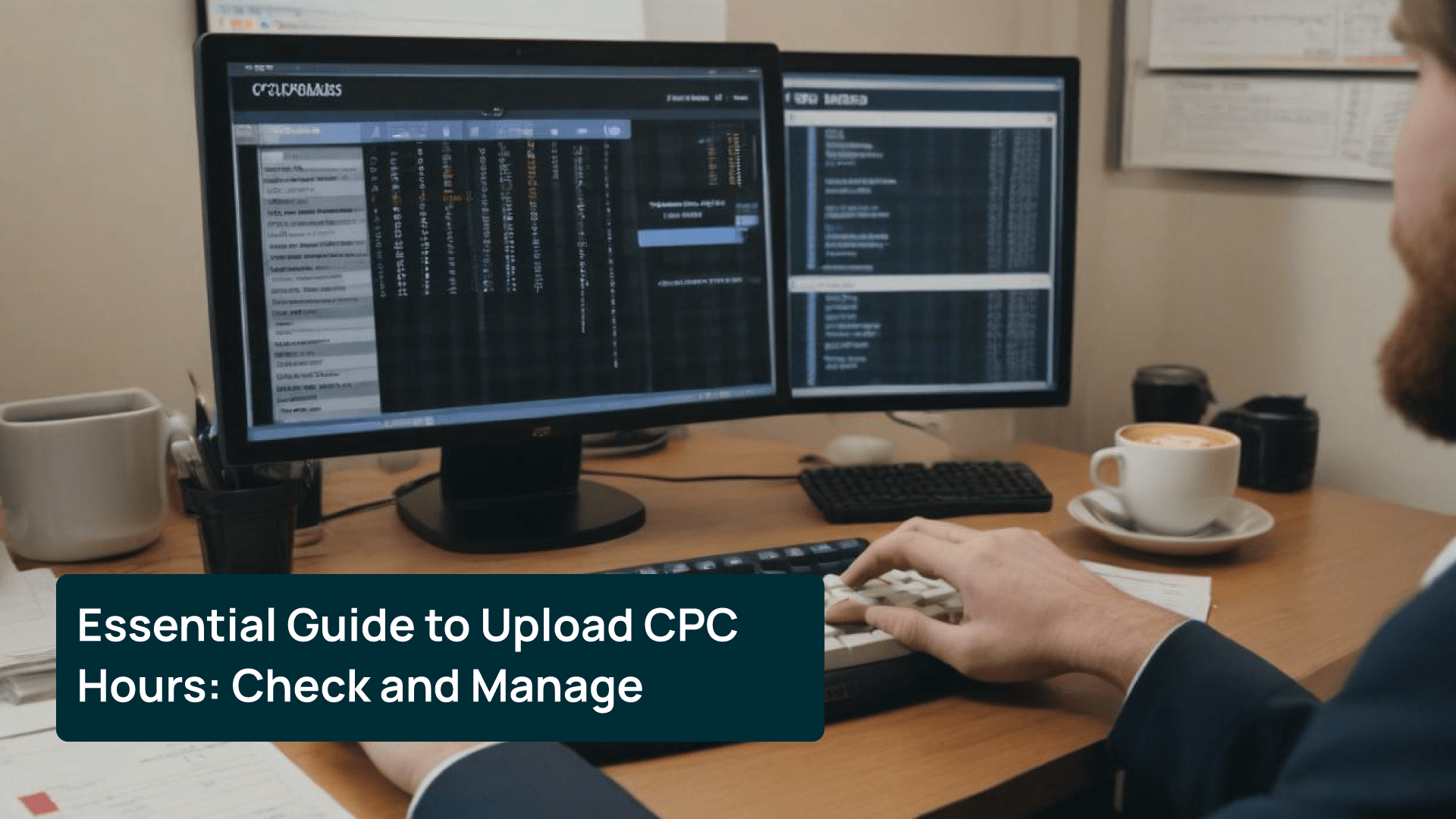Driver CPC (Certificate of Professional Competence) training is an essential part of the qualification for professional drivers in the transport industry. It is designed to ensure drivers remain compliant with road safety standards and have the necessary skills and knowledge to operate commercial vehicles efficiently and safely. Whether you’re a new driver or an experienced professional, it’s crucial to stay on top of your CPC training hours and maintain your qualification to continue working in the industry. This guide will take you through the essential steps for checking, managing, and ensuring you meet your Driver CPC training requirements.
Understanding Driver CPC Training
Driver CPC training was introduced to ensure that commercial drivers—those operating goods vehicles over 3.5 tonnes—are equipped with the skills and knowledge necessary to maintain safety on the roads. This training is critical not only for improving road safety but also for ensuring compliance with industry regulations, such as drivers’ hours and vehicle maintenance.
The training is designed to cover a wide range of topics relevant to the safe operation of commercial vehicles, including road safety, customer care, fuel efficiency, and legal requirements. It is a legal requirement for drivers of goods vehicles and buses to complete this training to maintain their Driver CPC qualification.
Driver CPC training is evidenced through the Driver Qualification Card (DQC), which is issued to drivers once they have completed the required number of training hours. This card proves that the driver has met the necessary qualifications and is compliant with the CPC requirements to drive commercially.
Checking and Managing Your CPC Hours
To stay compliant and continue driving professionally, drivers must ensure that they have completed the required CPC hours within the 5-year period. The requirement for professional drivers is to complete 35 hours of approved Driver CPC training every 5 years. It is essential to keep track of these hours to avoid suspension from professional driving.
Checking Your CPC Hours
There are several ways to check your CPC hours to ensure that they are properly recorded and that you are meeting the legal requirements:
- Online Account Registration: Drivers can register for an online account with the Vehicle Standards Agency (VSA) to check their CPC hours. The online system provides comprehensive information, including your licence number, course details, dates of completed courses, and any outstanding hours. This is the most efficient way to track your progress and ensure all your CPC training hours are accurately recorded.
- Checking Your Driving Licence: In some cases, drivers may also be able to verify their CPC hours through their driving licence record. This is a helpful way to double-check the accuracy of the hours recorded with the Vehicle Standards Agency.
- Contacting the Vehicle Standards Agency: If you are unable to find your CPC hours or there is an issue with the records, contacting the Vehicle Standards Agency can help. They can provide guidance on troubleshooting any discrepancies and can assist in uploading missed records.
- Government Website: You can also check your CPC hours on the official Government Website. This will give you a quick overview of your progress and help ensure that all required training has been recorded.
It’s important to regularly check your CPC hours to avoid any issues with compliance, especially if you’re approaching the end of your 5-year period.
Choosing the Right CPC Training Course
There are two primary types of Driver CPC training: Initial and Periodic.
Initial Driver CPC Training
Initial CPC training is required for drivers who have never held a professional driver’s licence or have not previously completed CPC training. This training is necessary for new drivers who do not have an existing lorry or bus entitlement on their driving licence. The Initial CPC training is comprehensive and covers all the essential knowledge a driver needs to safely operate a commercial vehicle.
Periodic Driver CPC Training
For those who have already acquired their CPC qualification, periodic training is required to maintain the certification. Periodic training must be completed within 5 years of the initial CPC certification to maintain compliance. This type of training is undertaken by drivers who have acquired rights through previous Initial CPC training or who have accumulated enough experience to qualify for periodic training without the need for initial qualification.

Types of Training Courses
Drivers can choose from a range of CPC training courses, including both classroom-based courses and online courses. Some drivers may prefer the flexibility of online courses, which can be completed at their own pace and from the comfort of their home. Others might prefer classroom training, where they can interact with instructors and fellow drivers.
It’s essential to select a training course that is approved by the Vehicle Standards Agency (VSA) to ensure that the hours are valid and contribute to meeting your Driver CPC requirements.
Completing Your Driver CPC Training
The 35-Hour Requirement
To maintain your Driver CPC qualification, you are required to complete 35 hours of approved training every 5 years. It’s important to note that these 35 hours must be completed within this 5-year period. If the hours are not completed, your qualification will expire, and you will not be able to legally drive commercially.
Drivers have the flexibility to complete the 35 hours of training in a way that works for their schedule. The training can be completed in one day or spread out over several sessions. The key is to ensure that all the hours are completed within the 5-year timeframe to avoid any issues with your qualification.
Approved Training Providers
The training courses must be conducted by an approved training provider. These providers are recognized by the Vehicle Standards Agency and are authorized to offer training that counts toward your CPC qualification. It is important to ensure that your provider is accredited to avoid any issues with the validity of the hours.
The Driver Qualification Card
The Driver Qualification Card (DQC), also known as the Driver CPC card, is issued automatically by the Vehicle Standards Agency after a driver completes the required 35 hours of Periodic CPC training or passes the Initial CPC Module 4.
The DQC is a vital document for all commercial drivers, and it must be carried at all times when driving professionally. The card serves as proof that the driver has met all CPC requirements and is authorized to operate a commercial vehicle.
The Driver Qualification Card is valid for 5 years from the date of issue. After this period, the driver will need to complete another set of 35 hours of Periodic CPC training to renew the card and continue driving commercially.
Troubleshooting Common Issues
Occasionally, drivers may encounter problems with their CPC hours not appearing in their records. If this happens, there are a few solutions:
- Attend the CPC Training Course: Ensure that you have attended the CPC training course and that your attendance is properly recorded. The training provider is responsible for uploading your hours to the Vehicle Standards Agency.
- Contact the Training Company: If your hours are missing or incorrect, you can reach out to the training company to verify that they have uploaded your attendance correctly.
- Contact the Vehicle Standards Agency: If the issue persists or if you need assistance, contacting the Vehicle Standards Agency is the next step. They can provide further guidance on troubleshooting and ensure that your hours are accurately recorded.
- Check the Government Website: Finally, make sure to check the Government Website for any updates on your CPC hours and to verify that they are reflected correctly in your records.
Benefits of Holding a Full CPC
Holding a valid Driver CPC card is a legal requirement for professional drivers, but the benefits of certification go beyond just meeting regulatory requirements. Some of the key advantages include:
- Enhanced Knowledge and Skills: Completing CPC training allows drivers to stay up-to-date with the latest best practices in road safety, vehicle operation, and legal compliance. It improves drivers’ ability to navigate complex situations and adapt to changes in the transport industry.
- Career Opportunities: A valid CPC card opens up more job opportunities in the transport and logistics sector. Many employers require drivers to have a full CPC certification, so holding the card can make you more competitive in the job market.
- Increased Earning Potential: With a CPC certification, drivers are seen as qualified and reliable professionals, which can lead to higher-paying job opportunities and better benefits. In fact, CPC-certified drivers often earn more than those without the certification.
Staying Up-to-Date with Driver CPC Requirements
The regulations and requirements related to Driver CPC training are subject to change over time. Drivers must stay informed about these changes to ensure they remain compliant with the latest rules. Regularly attending Driver CPC training is one of the best ways to stay updated on changes in the industry, including updates to vehicle standards, driving practices, and legal requirements.
By completing regular training, drivers not only maintain their qualifications but also enhance their skills, making them more adaptable and proficient in their roles. Additionally, drivers should keep an eye on the Vehicle Standards Agency website for any updates on CPC regulations.
Conclusion
Managing and uploading your CPC hours is an essential part of maintaining your professional qualifications as a driver. By staying on top of your CPC training, ensuring your hours are properly recorded, and completing your 35 hours of training every 5 years, you can ensure that you remain compliant with industry regulations and continue driving commercially without any issues. Holding a valid Driver CPC card not only keeps you legal but also opens up career opportunities and enhances your knowledge and skills in the transport industry.



